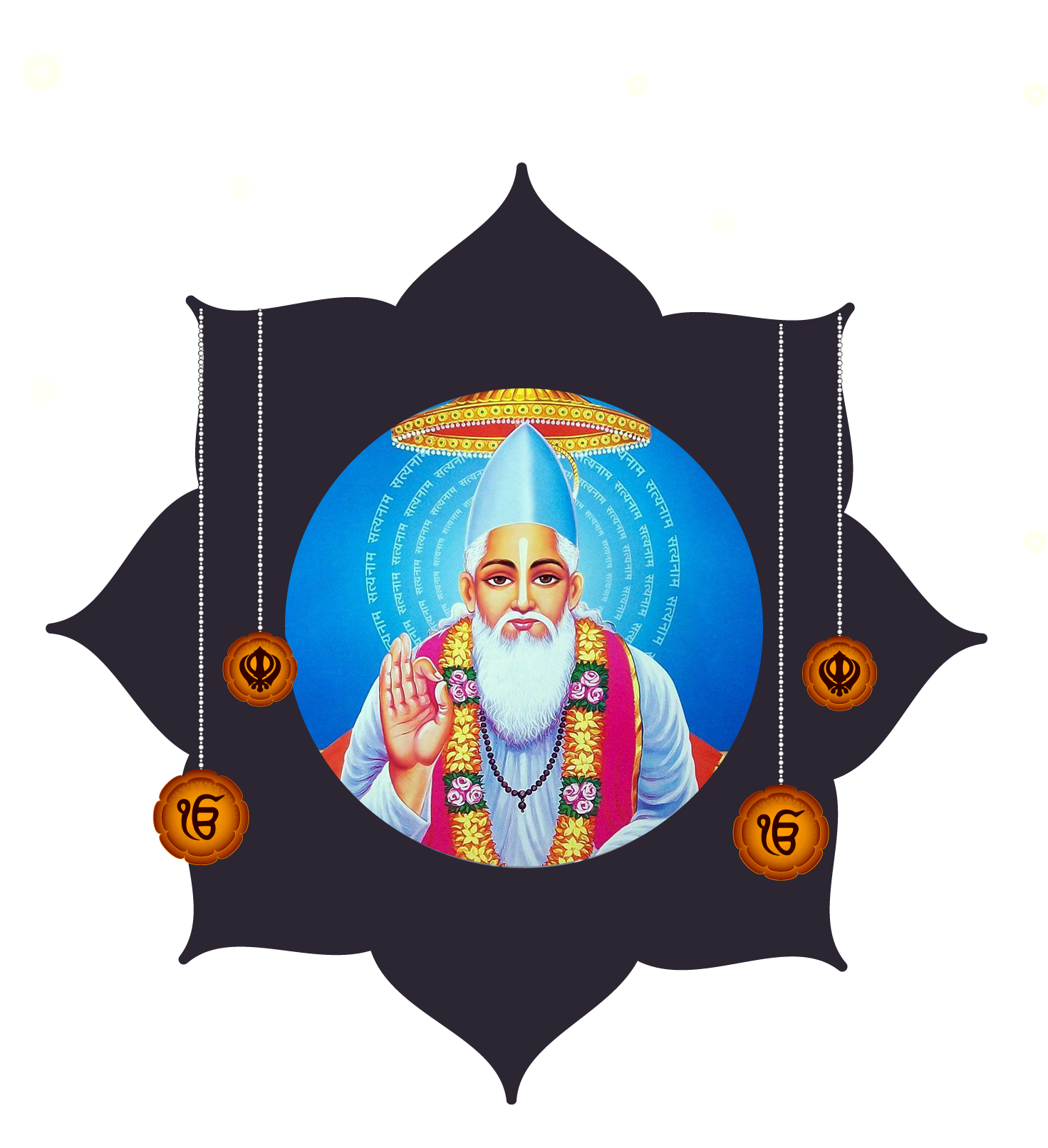
A revolutionary poet and saint of the Bhakti Movement, Bhagat Kabir Ji. He emphasized humanity's equality and fraternity. Previously, Bhagat Kabir Ji planned to sell the fabric he had produced on his own.
Saint Kabir Das is regarded as one of the prominent figures of the Bhakti movement in North India (kabir is Arabic for "great" and dasa is Sanskrit for "slave" or "servant"). According to general consensus, he was born in the year 1398. Kabirpanthis claims that he lived to the age of 120 and gives the year of his death as 1518, but Charlotte Vaudeville, a British scholar, is inclined to give credence to these dates and has demonstrated that 1448 is likely the correct year of Saint Kabir's passing.He was a figure among the Bhakti and Sufi saints of ancient India, and the Guru Granth Sahib, the sacred book of the Sikhs, contains some of his writings.
Kabir's contribution, which includes 227 Padas in 17 ragas and 237 shlokas, is the most significant of all of them. Kabir's hymns, known as Bhagat Bani, a collective term for the works of contributors other than the Gurus, appear at the head of each raga or musical mode marking a portion of the Holy Book. Some Western academics have referred to Kabir as the founder of Sikhism partly because of the inclusion of a sizable portion of Kabir's poem in the Sikh Scripture and his chronological proximity to Guru Nanak, the founder of the Sikh faith.
Kabir flourished amid a period of intense political instability in India, the fifteenth century after Christ. Kabir's life has received relatively little trustworthy information, as is the case with many modern religious gurus, despite the fact that legends abound about him. Kabir's life revolved around Kashi, also known as Banaras (Varanasi). According to legend, he was actually the son of a Brahmin widow who abandoned him. A Muslim weavers named Niru found the kid and took him in, teaching him the craft of weaving. It is unclear if he actually got married, but according to folklore, he had a wife called Loi and two kids.
Kabir stands by ahimsa. His way of thinking involves not even harming flowers. "You take the life of the living and claim that your killing makes it devoted. You and the people who educated you are being haunted by blood. They fasted all day, and then at nightfall they kill the cow. How can this please God? Here murder, their devotion. O' Kazi, on whose authority do you employ your knife? "What else is a sin when you claim that animal slaughter is your religion?
Instead of writing a structured treatise, Kabir's work is made up of several brief instructional poems that are frequently presented in concise, forceful language in the form of Padas, Dohas, and Ramainis (poetry forms in Indian languages). Two further collections—Kabir Granthavali and Bijak—exist in addition to the work that Guru Arjan Dev, Nanak V, recorded in 1604 A.D. and kept without alteration ever since in the Guru Granth Sahib. Many of his similes and metaphors are highly powerful. He was quick to illustrate moral and spiritual truth in ordinary situations in his poetry.
KFrom the 15 bhagats, Bhagat Kabir Ji supplied the most hymns, placing fifth in terms of the amount of Bani he contributed to SGGS Ji. 541 hymns overall, with 18 distinct musical measures, are his contributions (Ragas). Of all the saints associated with the Bhakti movement, Kabir is regarded as the most revolutionary. He was a well-known Ramanand devotee who didn't hold back while criticizing rigidity and pointless religious rituals. He once received advice from Ramanand to rise early and remember the Lord. He was so moved by this advice that he spread it throughout his life, rousing others from their everyday ignorance and bringing them closer to the Lord.
From the 15 bhagats, Bhagat Kabir Ji supplied the most hymns, placing fifth in terms of the amount of Bani he contributed to SGGS Ji. 541 hymns overall, with 18 distinct musical measures, are his contributions (Ragas). Of all the saints associated with the Bhakti movement, Kabir is regarded as the most revolutionary. He was a well-known Ramanand devotee who didn't hold back while criticizing rigidity and pointless religious rituals. He once received advice from Ramanand to rise early and remember the Lord. He was so moved by this advice that he spread it throughout his life, rousing others from their everyday ignorance and bringing them closer to the Lord.
Even in his later years, when he was well over 100 years old, Kabir ji continued to write songs that capture his spirit of revolution. He holds that there is just one basis for piety, and that is the location where God's name is pronounced. Kabir ji relocated to Maghar before removing his physical clothing. People at the period had the belief that those who pass away in Kashi go to paradise while those who pass away in Maghar go to hell. Kabir Ji risked his life in order to demonstrate the absurdity of such ideas. In a song on SGGS ji's Ang 491, Guru Amar Das ji vehemently backed Kabir ji's stance, emphasizing that making pilgrimages or passing away in any place is not the same as participating in any religion.
Kabir has always worked to instill in people a sense of love, compassion, and cooperation with others. He emphasized the value of the householder's life, as did many other great people, since it teaches and closely binds mankind. As a result, he has no qualms in presenting the Lord with a "memorandum of demands" for a contented home life.